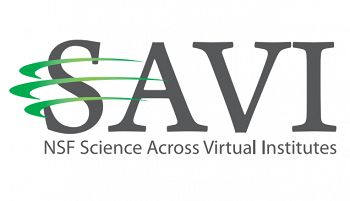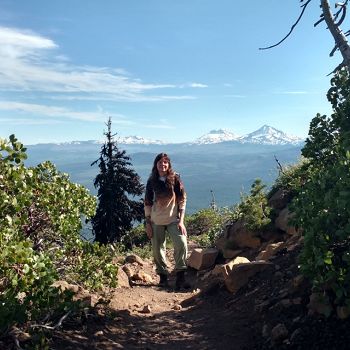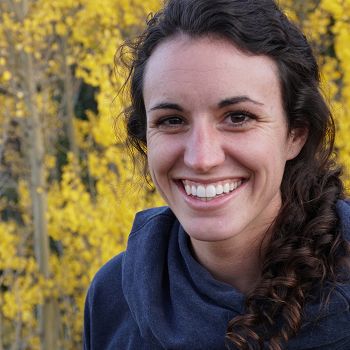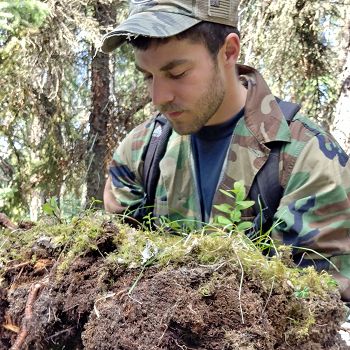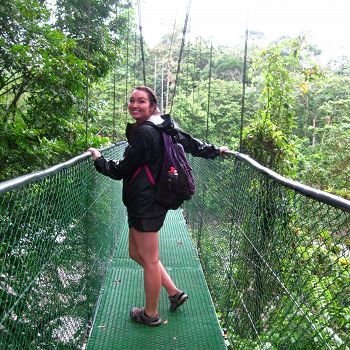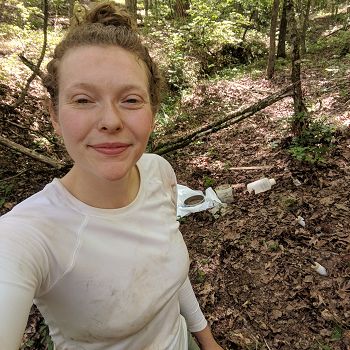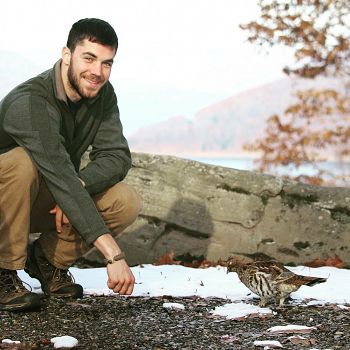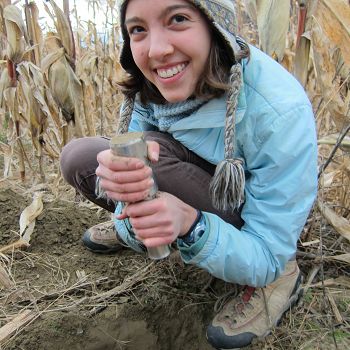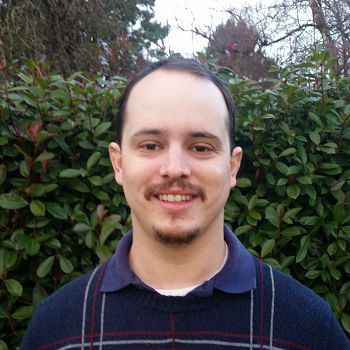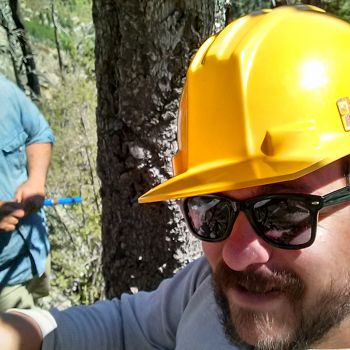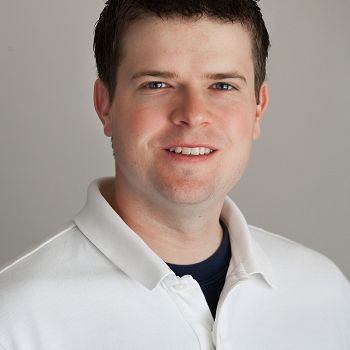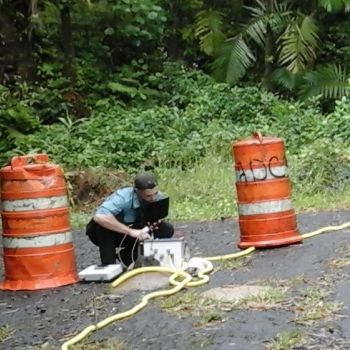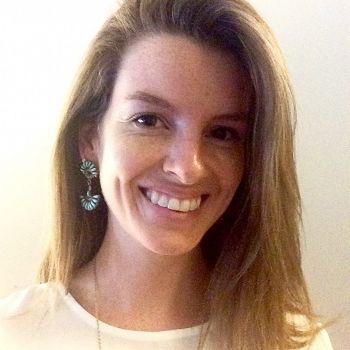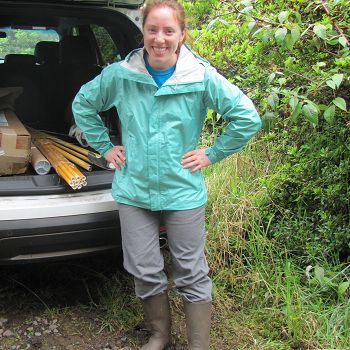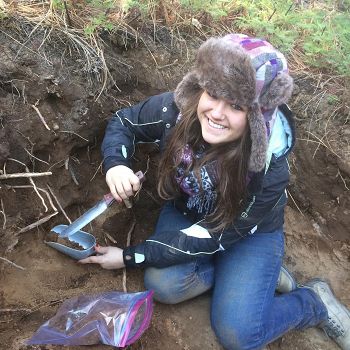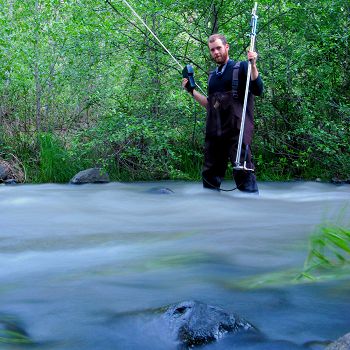Summer Interns
The Critical Zone Observatories (CZOs) represent a wide range of environmental and landscape settings. To enable broad understanding of the evolution, function and sustainability of the Critical Zone, the CZOs have begun to articulate scientific questions that are common and have value across the entire CZO network.
A major goal of the CZO Science Across Virtual Institutes (SAVI) program is to develop the theme of common science and measurements, and include young scientists who will advance CZ science through their careers. The National Sceicne Foundation has provided funding to the Science Across Virtual Institutes (SAVI) project to enable cross-CZO or “common” research at multiple CZOs by graduate student or postgraduate summer interns.
NSF Science Across Virtual Institutes (SAVI) logo
CZO SAVI Summer Interns:
2019 | 2018 | 2017 | 2016 | 2015
2019 Summer Interns
- Jennifer Fedenko (Oregon State University)
- Katherine Hale (University of Colorado Boulder)
Jennifer Fedenko
Oregon State University
Jennifer Fedenko’s research is focused on how soil properties differ across varying landscapes. She is originally from Portland, Oregon and has a background in both science and art. Jennifer’s interests include ecosystem and soil conservation, communicating earth science to the general public to ensure all citizens are well-informed, as well as, working to engage with and diversify the field of STEM. She currently is a graduate student at Oregon State University working with Dr. Rebecca Lybrand.
Jennifer works to quantify carbon and other nutrients in the mineral soil horizons of upland coastal rainforests. Her study area is the Tongass National Forest which is a perhumid temperate rainforest near Juneau, Alaska. This highly productive forest along the southeast Alaskan coast can sequester carbon into great depth within the soil profile. With CZO SAVI funding, she completed field research in these upland forests to survey, collect and process samples. Jennifer, along with a research team, described and sampled pedons for lab analyses per the USDA Forest Service and National Resources Conservation Service (NRCS).
Katherine Hale
University of Colorado-Boulder
Kate Hale is a PhD student at the University of Colorado-Boulder and Institute for Arctic and Alpine Research, working with Dr. Noah Molotch. She studies snow hydrology, specifically the timing of rain, snow, snowmelt and the effect on hydrologic partitioning in the critical zone and at the regional (Western U.S.) and continental scales.
With her SAVI funding, Kate worked closely with Dr. Sarah Godsey (Idaho State University) and colleagues at the USDA Agricultural Research Service and Boise State University. She learned how to operate the Automated Water Supply Model (AWSM) and evaluate the hydrologic outputs for the Johnston Draw catchment, part of the Reynolds Creek Experimental Watershed. Simulating a historic wet and historic dry year, Kate quantified the relationship between precipitation, snow fraction, and surface water inputs (SWI) on annual and storm time scales in this unique rain-snow transition zone. She found that while SWI is a function of rain and snowmelt, precipitation more strongly drives SWI on an annual scale, while snow water equivalent more strongly drives SWI on a storm scale. This project is to wrap up in summer of 2020 in print and further support her greater dissertation and academic goals.
2018 Summer Interns
- Taylor Blackman (Virginia Tech)
- Kayla Glossner (Idaho State University)
- Caitlin Hodges (Pennslyvania State University)
Taylor Blackman
Virginia Tech
Taylor Blackman is from Warren, Pa, and grew up around the Allegheny National Forest. Pursuing a passion in environmental sciences, he graduated from Penn State University with a bachelor’s in water science and is currently finishing up a master’s in soil science at Virginia Tech.
Vernal pools are small isolated wetlands that support a critical breeding habitat for amphibians and contribute significantly to local nutrient cycling. Their origin, distribution, and status across the Pennsylvania Ridge and Valley Province are relatively unknown. In his second year as a CZO SAVI intern and in conjunction with the Shale Hills CZO, Taylor uses geospatial analysis to find and inventory vernal pools and then conducts field surveys to gather baseline data of site conditions. The current collection of over 1000 study sites resulting from this project along with baseline data of site soil and biotic conditions, and an understanding of the landscape morphology in which these features reside upon will aide in future research of these areas.
Kayla Glossner
Idaho State University
Kayla Glossner is a second year M.S. student in Dr. Kathleen Lohse’s Lab at Idaho State University. During her undergraduate at Lock Haven University of Pennsylvania she developed a passion for stream ecology and followed it across the country. Her current work focuses on biogeochemical cycling in the Reynolds Creek CZO (RCCZO).
Particulate organic carbon (POC) yields have been reported from multiple CZOs, but there has been little comparison of them. From her SAVI grant, Kayla worked with Dr. Allison Appling from the USGS to understand available R software packages that assist in quantifying solute and sediment fluxes. This has driven her understanding of calculating yields using high frequency, long-term data. With the software, she was able to calculate annual yields for various subwatersheds of the RCCZO. When compared to yields reported from the Catalina-Jemez CZO (CJCZO) in 2012 (Condon, 2013), data suggests the RCCZO exports more POC than the CJCZO. However, one year of data in the case with CJCZO does not fully represent a watershed’s annual yield because arid and semi-arid erosion is often driven by annual hydrologic variation leading to the need future data collection and research.
Caitlin Hodges
Pennsylvania State University
Caitlin is currently a second-year Ph.D. student at Penn State University studying soil biogeochemistry at the Susquehanna Shale Hills CZO (SSHCZO) in Dr. Jason Kaye’s lab. She is fascinated by the influence that temporally-short low-oxygen conditions exert on elemental cycling in upland soils. Her research focuses on the coupled cycling of redox-active metals with carbon and essential nutrients.
During her time as a master’s student in Dr. Aaron Thompson’s lab at the University of Georgia, she studied the factors that affect spatial and temporal variability in iron redox cycling at the Calhoun CZO (CCZO). Using her knowledge of the soils at both CZOs, she sought to compare the metal oxide reducibility and associated nutrients between the two sites through her SAVI award. She expects that the soils at the SSHCZO, which are manganese oxide rich, will behave differently than the iron oxide-rich, manganese oxide-poor soils at the CCZO. Using information on reducibility and associated nutrients, she seeks to link periods of low-oxygen induced reductive dissolution to DOC and nutrient concentrations in soil porewater and streams.
2017 Summer Interns
- Taylor Blackman (Virginia Tech)
- Emma Hauser (University of Kansas)
Taylor Blackman
Virginia Tech
Taylor Blackman earned a B.S. in Environmental Resource Management with a minor in GIS from The Pennsylvania State University. In his junior year, he participated in a Research Experience for Undergrads (REU) with the Susquehanna Shale Hills CZO studying vernal pools. This experience motivated Taylor to continue vernal pool research as a graduate student at Virginia Tech.
Vernal pool distribution across the Pennsylvania Ridge and Valley is relatively unknown. Efforts were made by the U.S. Fish and Wildlife Service to map the conterminous U.S. through the National Wetlands Inventory (NWI) but such small wetlands are often omitted. Legal protections and the ability to study these ecologically unique wetlands in a landscape is predicated on an accurate spatial inventory. With his SAVI award, Taylor with the help of Dr. Tim White (PSU) used spatial data relating to topography and geology to predict the occurrence of vernal pools in a section of the Appalachian Mountains. In all, 157 sites were visited to verify the presence of a wetland with 78 confirmed amounting to a total of 190 individual pools. Of the 78 confirmed sites, 32 sites were not listed on the NWI and 43 sites were observed to have amphibians. This mapping and field effort contributed greatly to Taylor's current graduate research.
Emma Hauser
University of Kansas
Emma is a second year Ph.D. student in Dr. Sharon Billings’ lab at the University of Kansas. As an undergraduate at Earlham College, she developed an appreciation for the complexity and importance of soils that continues to inspire her study of belowground ecosystems. Her current work focuses on soil nutrient cycling dynamics with an emphasis on phosphorous. She enjoys trying to apply her soil studies to projects in her community garden.
Emma’s research examines the extent to which recycling organic matter provides the nutrients needed to support ecosystem productivity across different stages of soil development. With the SAVI award, she sampled leaf litter at the Catalina Jemez, Susquehanna Shale Hills and Calhoun CZOs, which represent a gradient of soil weathering from least to most developed soil. She then incubated the litter to determine the potential annual rate of organic matter nutrient release. Preliminary results suggested that where soils have fewer fresh mineral surfaces, organic matter has a greater potential to meet vegetation nutrient demands. She is currently testing the hypothesis that these rock-derived vs. organic matter-derived nutrient sources elicit different root-carbon allocation responses, thereby altering soil carbon cycling. Her work highlights the ways in which soil weathering and mineralogy affect ecosystem productivity and interact with soil carbon dynamics.
2016 Summer Interns
- Stephen Kirkley (Oregon State University)
- Jeff Lauder (University of California, Merced)
- Hugo Sindelar (Montana State University)
- Neil Terry (USGS)
Stephen Kirkley
Oregon State University
Stephen Kirkley got his B.S. in environmental science at the University of California, Riverside. During his time in a soils course at UC Riverside, Dr. Robert Graham illustrated the complex, multifaceted nature of soils leaving Stephen yearning to learn more about biological contributions to soil geomorphology. He is currently in a soil science graduate program under the guidance of pedologist, Dr. Rebecca Lybrand.
With funds awarded through the SAVI summer internship, Stephen worked to understand climate and landscape variations in microbial contributions to soil structure and stability. At the Catalina-Jemez CZO (CJCZO) in Arizona and the Calhoun CZO (CCZO) in South Carolina, he established three pairs of convergent (water gathering) and divergent (water shedding) plots. He then sampled surface soils to test for physical properties (bulk density, aggregate stability and particle size analysis) and microbial activity (hyphal length, shotgun genomic analysis of microbial community, and exo-enzyme activity). Aggregate stability was found to be overall higher at the CJCZO as well as in convergent landscape positions at both sites. He predicts that DNA analyses will show mycorrhizae dominating fungal communities at divergent positions and saprotrophic fungi prevailing in convergent positions. This work was in collaboration with CZO researchers including, soil microbiologist, Dr. Rachel Gallery, and microbiologist, Betsy Arnold, at the University of Arizona, as well as clay mineralogists, Dr. Paul Schroeder and Dr. Jay Austin, at the University of Georgia, Athens.
Jeff Lauder
University of California, Merced
Jeff Lauder is currently a Ph.D. student in Dr. Emily Moran's lab at the University of California, Merced. His primary interests lay in forest ecology with respect to climate change and disturbance. Jeff’s current research uses a network of forest inventory plots across the Southern Sierra Critical Zone Observatory (SSCZO) to examine drought tolerance in pines and scale drought responses from the individual cell to the whole forest by combining dendrochronology, tree ring anatomy, and overstory measurements.
Jeff looked at differences in cellular growth response to changing competition and water availability among widely distributed pine species in the SSCZO and Sequoia National Park (SEKI). Tree ring growth records in increment cores were used to assess how variation in tree ring cellular anatomy tracks forest density, drought intensity, and likelihood of drought-induced mortality. Preliminary results demonstrated that drought has a larger impact than crowding on tree ring width and anatomy but stand density and drought do have a weak interactive effect on growth. Anatomical measurements show that intermediate xylem wall thickness and conduit diameter were associated with increased likelihood of survival, counter to long-standing theories of hydraulic safety in trees. These results demonstrate potential trade-offs and “sweet spots” for growth and hydraulic safety, and continued analysis will examine the relationships among xylem anatomy and other tree traits such as reproduction.
Hugo Sindelar
Montana State University
Hugo received a B.S. in environmental engineering from Lafayette College, a Ph.D. in environmental engineering sciences from the University of Florida, and is currently an M.F.A. student in science and natural history filmmaking at Montana State University. After his Ph.D., he decided to pursue a career in filmmaking in the hopes of better communicating scientific research to the public. When he is not making films, he enjoys exploring his home in Bozeman, Montana through mountain biking, photography, and fly-fishing.
Hugo has been involved in the development of a Reynolds Creek Virtual Tour (ReVRT) to share the research being conducted at the Reynolds Creek Critical Zone Observatory (RCCZO) with local stakeholders and the broader public. Thirteen videos have been developed for the ReVRT, covering numerous topics, including an overview of the RCCZO watershed, a rancher’s perspective, inorganic and organic carbon, Soda Fire recovery research, snow modeling, and the CORE site network at RCCZO. The RCCZO watershed is a patchwork of public and private land working together through a cooperative agreement. Private landowners have generously allowed access to their land, but sometimes do not fully understand the scientific research being conducted in the area. The videos being produced for the ReVRT will provide scientists at RCCZO with a tool to help local stakeholders and the broader public understand their research. Support from the SAVI grant has been instrumental in funding the extensive work that has gone into the planning, development, and production of the ReVRT videos.
Neil Terry
U.S. Geological Survey
Neil Terry received his Ph.D. from Rutgers University and currently works as an environmental scientist specializing in near-surface electrical geophysical methods at the U.S. Geological Survey (USGS) Branch of Geophysics. He is particularly interested in applying these techniques to inform models of critical zone processes.
Fracture zones at the Luquillo CZO likely facilitate weathering processes that constitute critical zone formation. Geophysical methods can help to understand the likely depth and extent of these fracture zones. Support from the CZO SAVI summer intern program enabled Neil to build large electrical resistivity cables for sensing deep critical zone structure and to combine these surveys with other geophysical measurements conducted by participants from Rutgers University and Florida Atlantic University (led by Dr. Xavier Comas). Data from these new electrical resistivity measurements constrained the depth to unweathered bedrock at three sites within the Luquillo CZO and showed evidence of both features that promote weathering (open fracturing) and features resulting from weathering (large corestones).
2015 Summer Interns
- Liz Coward (University of Pennslyvania)
- Elizabeth King (Oregon State University)
- Kimber Moreland (University of California, Merced)
- Christopher Tennant (University of California, Berkeley)
Liz Coward
University of Pennsylvania
Liz Coward is a Ph.D. candidate at the University of Pennsylvania, investigating terrestrial Fe-C complexation under the advisement of Dr. Alain Plante (Luquillo) and Dr. Aaron Thompson (Calhoun). She is broadly interested in understanding how interactions between minerals, microbes, and plants affect stabilization, transformation, and losses of organic matter within the critical zone. When not at the lab bench, Liz can be found exploring the great city of Philadelphia, camera in hand.
The CZO SAVI summer intern award funded her research on Fe-C interactions in Calhoun and Luquillo soils, probing the role of highly-reactive, semi-crystalline mineral phases in stabilizing disproportionate quantities of soil organic matter in both Fe-rich soil systems. Results from selective dissolution and nanoscale spectroscopic analyses demonstrate that these organomineral associations act as a critical, yet matrix-selective, driver of SOM stabilization capacity in both systems, at the surface and at depth. Comparison between the deep, highly-weathered tropical soils of Luquillo and the temperate, historically mixed-use plots of Calhoun has lent insight into variation in C stabilization across climactic and pedogenic gradients.
Elizabeth King
Oregon State University
Liz King is originally from Boston, MA and did her undergraduate work at Boston University where she became interested in trace metal geochemistry and understanding the processes that connect terrestrial and marine environments. Currently, Liz is a graduate student at Oregon State University working with Dr. Julie Pett-Ridge. Her research focuses on using heavy stable isotopes to tease apart soil forming factors and tracing the kinetics of biogeochemical cycles through soil formation and input to the ocean.
The goal of her CZO summer internship study on Luquillo CZO soils was twofold: to determine the fate of molybendum (Mo) and to quantify the Mo isotopic fractionation during oscillating reducing soil conditions. Mo isotopes can be used to quantify the amount of redox a soil has experienced because Mo isotopes likely fractionate between the colloidal and aqueous phases, and the aqueous phase is preferentially leached from the system. To look at this, Liz traveled to the Luquillo CZO in October 2015 with Dr. Aaron Thompson to collect fresh soil from the volcaniclastic and granitic quartz diorite field sites, since they are typically subjected to oscillating redox conditions. She expects more Mo to be released to the aqueous phase in soils exposed to reducing conditions compared to oxidizing conditions, as well as, the aqueous phase to be enriched in heavy Mo isotopes and the colloidal phase enriched in light Mo isotopes. Preliminary measurements indicate that Fe is two orders more concentrated in the aqueous phase of samples exposed to reducing conditions. Mo is also more abundant under reducing conditions suggesting that Mo is released with Fe dissolution. This research will result in a more comprehensive understanding of fate of trace elements during colloidal dispersion and soil redox history.
Kimber Moreland
University of California, Merced
Kimber Moreland is a graduate student working under Dr. Asmeret Asefaw Berhe at UC Merced and collaborating with Dr. Craig Rasmussen. Her interests include global modeling of soil organic carbon, biogeochemistry, and lithology. She is passionate about STEM outreach in her community and how to bring soil science to the general public through technology.
Kimber investigates how climate and topography regulate subsoil soil organic carbon (SOC) storage, composition, and stability, stoichiometry, and stabilization mechanisms in the critical zone. A lot of work over the last few years has focused on near surface SOC dynamics, relatively little attention has been devoted to improving our understanding of subsoil SOC dynamics. The mechanisms that regulate the magnitude and direction of the changes in subsoil SOC dynamics as a function of changes in climate or geomorphic processes across scales, along with the temporal and spatially dependent relationships between the production, flux, and chemistry of soluble elements across the soil profile remain unclear. Her research took place in the Southern Sierra and Catalina-Jemez CZOs. The CZO sites are particularly well suited to address these research questions as they are located along an elevation transect (climosequence) that allowed a space for a time substitution approach to study climate change effects. The proposed study used a range of advanced analytical approaches from soil science, biogeochemistry, and ecology to address my research questions. CZO SAVI funding allowed Kimber to collect samples from four elevation sites at the Catalina-Jemez CZO that she will analyze to compare/contrast data from other CZO’s.
Christopher Tennant
University of California, Berkeley
Chris Tennant recently completed his PhD focused on understanding potential climate change impacts on mountain snowpack and is now a postdoctoral scholar in the Environmental Systems Dynamics Laboratory at UC Berkeley. Chris employs a field and modeling-based approach to his work and enjoys working at the interface of hydrology, ecology, and geomorphology.
Warming could alter the hydrologic regimes of snow dominated mountains and motivate improved understanding of physiographic influences on seasonal snow accumulation. Light detection and ranging (LiDAR) measurements from five CZO sites across hydroclimates of the western U.S. were used to quantify the influence of elevation, vegetation, and topography on snow depth. All sites exhibited increases in snow depth with elevation; however, the relationships were not monotonic and varied in form and rates of increase. The greatest snow-storage occurred where depth-elevation curves peaked, where land area was greatest, or when coincident peaks between the depth-elevation and area-elevation curves occurred. Analysis of variance yielded further insight, revealing that mean snow depths were significantly different when grouped by aspect or by land cover. The amount of variation explained by topographic predictors were correlated to the energy balance at each site and reveal the varying influence of different processes (e.g. radiation, wind redistribution, etc.) on seasonal snow accumulation. This correlation suggests differential sensitivity to warming, alterations to the energy balance, and changes in tree line elevation or extent of forests. This study demonstrates the utility of LiDAR for understanding controls on seasonal snowpack and will be valuable to water managers and researchers investigating CZ sensitivity to climate change.
Find the published article, "Regional sensitivities of seasonal snowpack to elevation, aspect, and vegetation cover in western North America," involving this research in Water Resources Research (August 2017).
LiDAR reveals the "third dimension", snow depth, across large spatial extents of snowy landscapes. This new perspective exposes snow patterns with unprecedented resolution and scope and provides insights into landscape-scale water storage. This 2x exaggerated image is from a 40 km2 portion of the Boulder Creek Watershed, CO, USA and displays the results of snow transport by strong westerlies to sheltered eastern slopes. LiDAR data were collected in a collaborative effort between the Boulder Creek CZO and the National Center for Airborne Laser Mapping, funded by the NSF.
Liz Coward
Elizabeth King
Christopher Tennant
LiDAR reveals the "third dimension", snow depth, across large spatial extents of snowy landscapes. This new perspective exposes snow patterns with unprecedented resolution and scope and provides insights into landscape-scale water storage. This 2x exaggerated image is from a 40 km2 portion of the Boulder Creek Watershed, CO, USA and displays the results of snow transport by strong westerlies to sheltered eastern slopes. LiDAR data were collected in a collaborative effort between the Boulder Creek CZO and the National Center for Airborne Laser Mapping, funded by the NSF.
Kimber Moreland
Stephen Kirkley
Jeff Lauder
Hugo Sindelar
Neil setting up a resistivity survey at the Luquillo CZO
Emma Hauser
Taylor Blackman
Taylor Blackman
Caitlin Hodges
Kayla Glossner
Jennifer Fedenko
Katherine Hale
Explore Further
